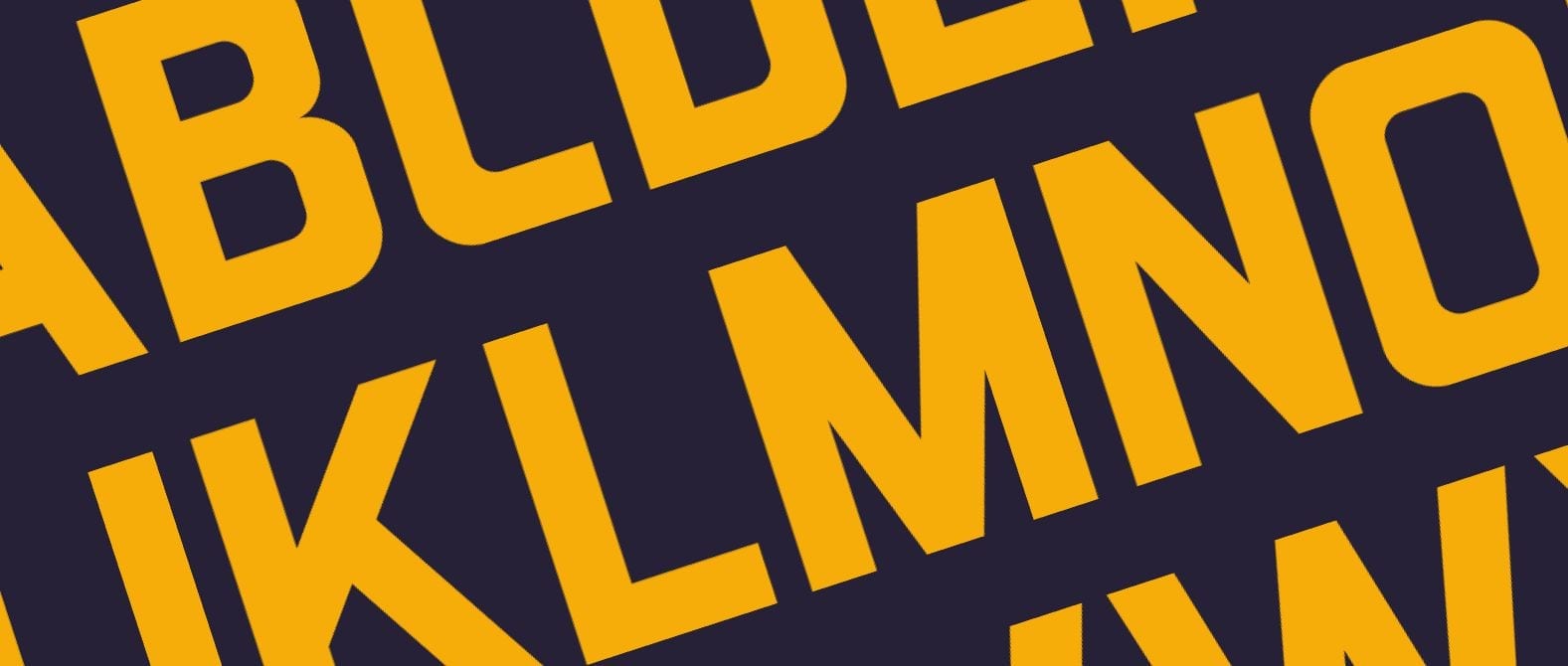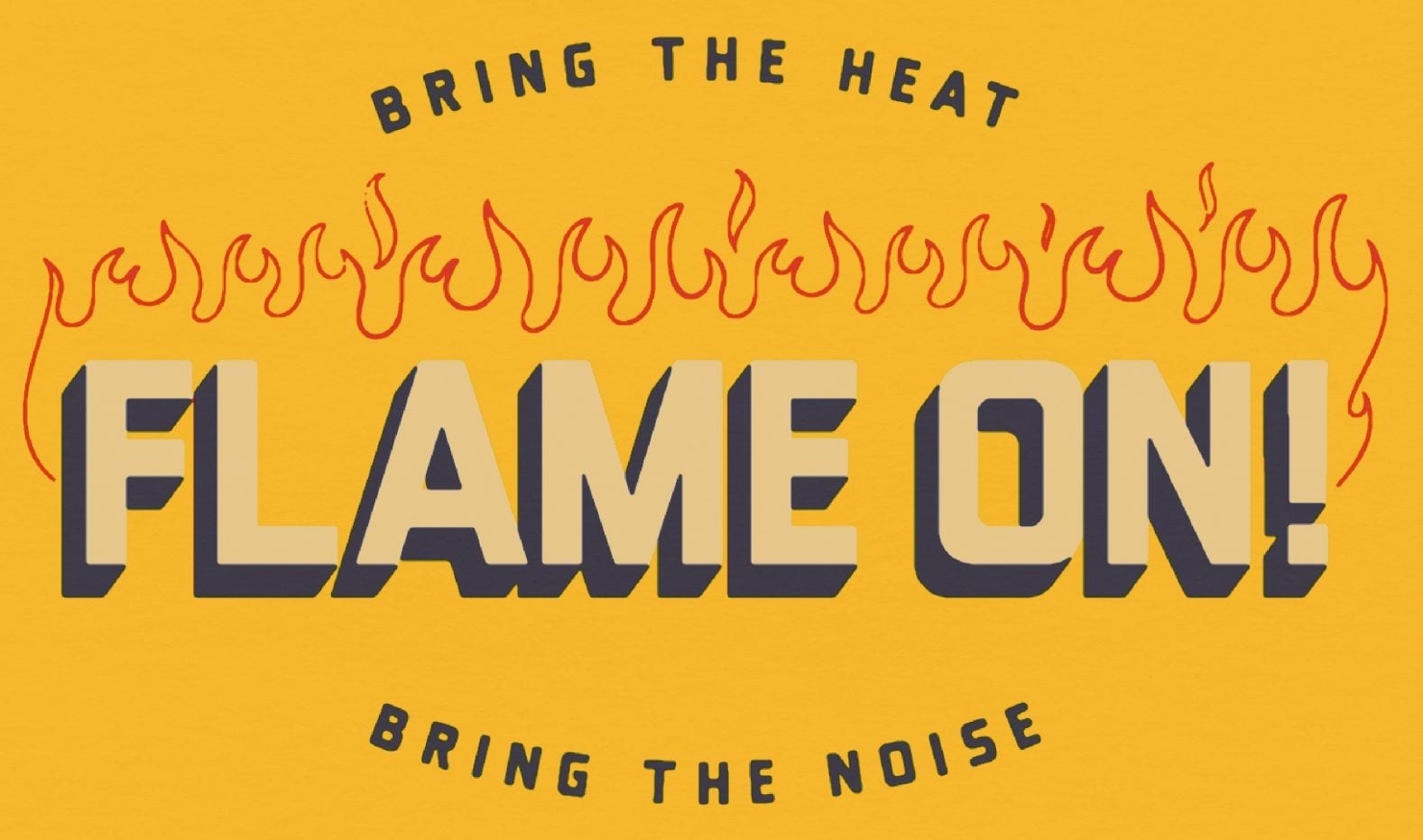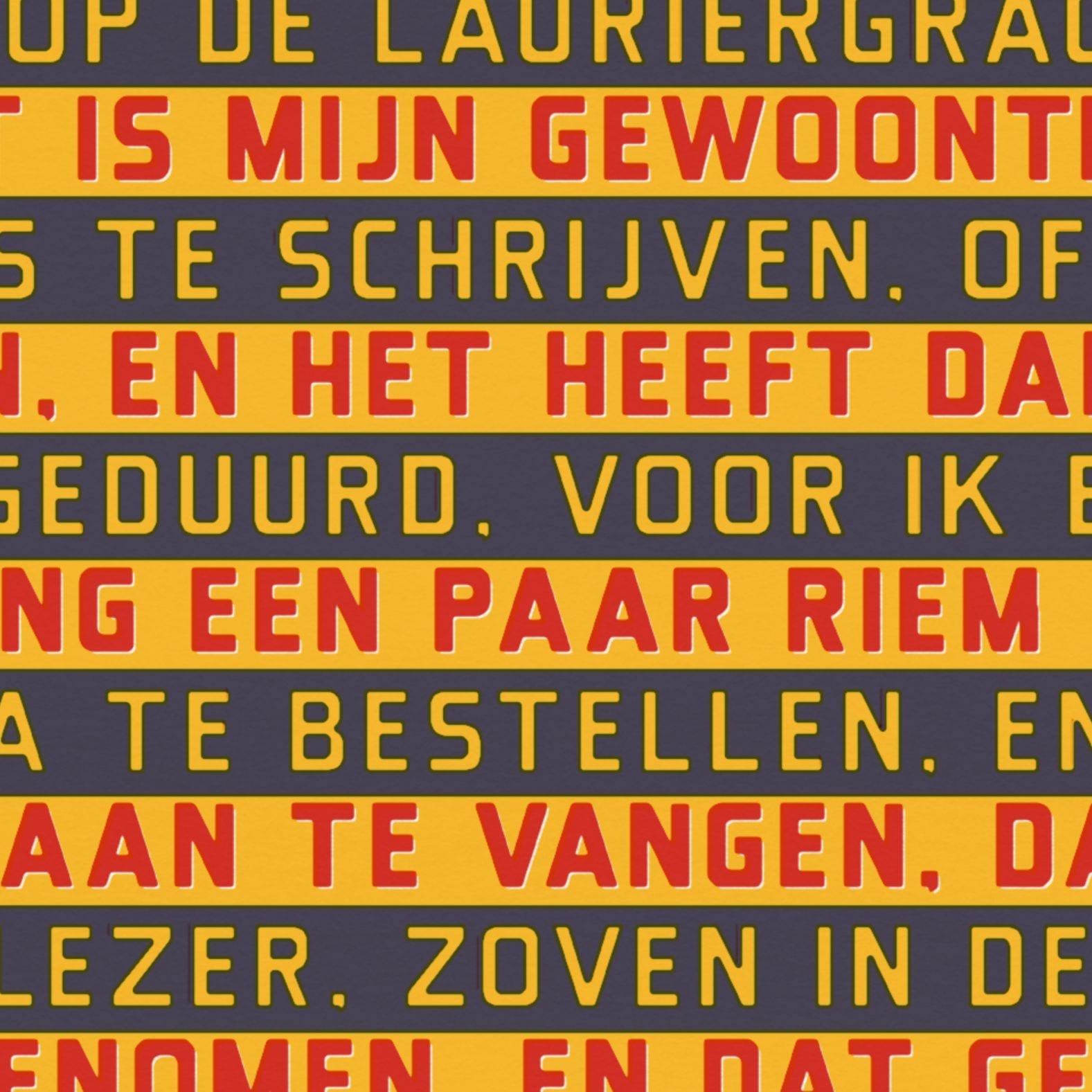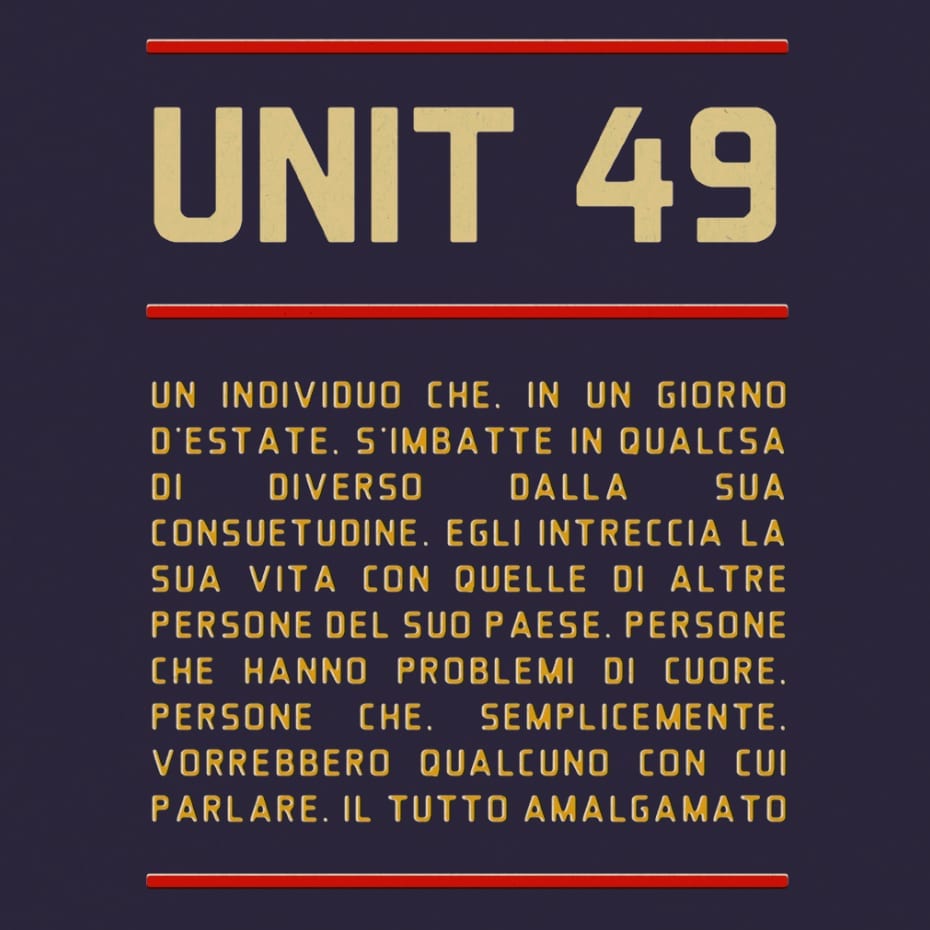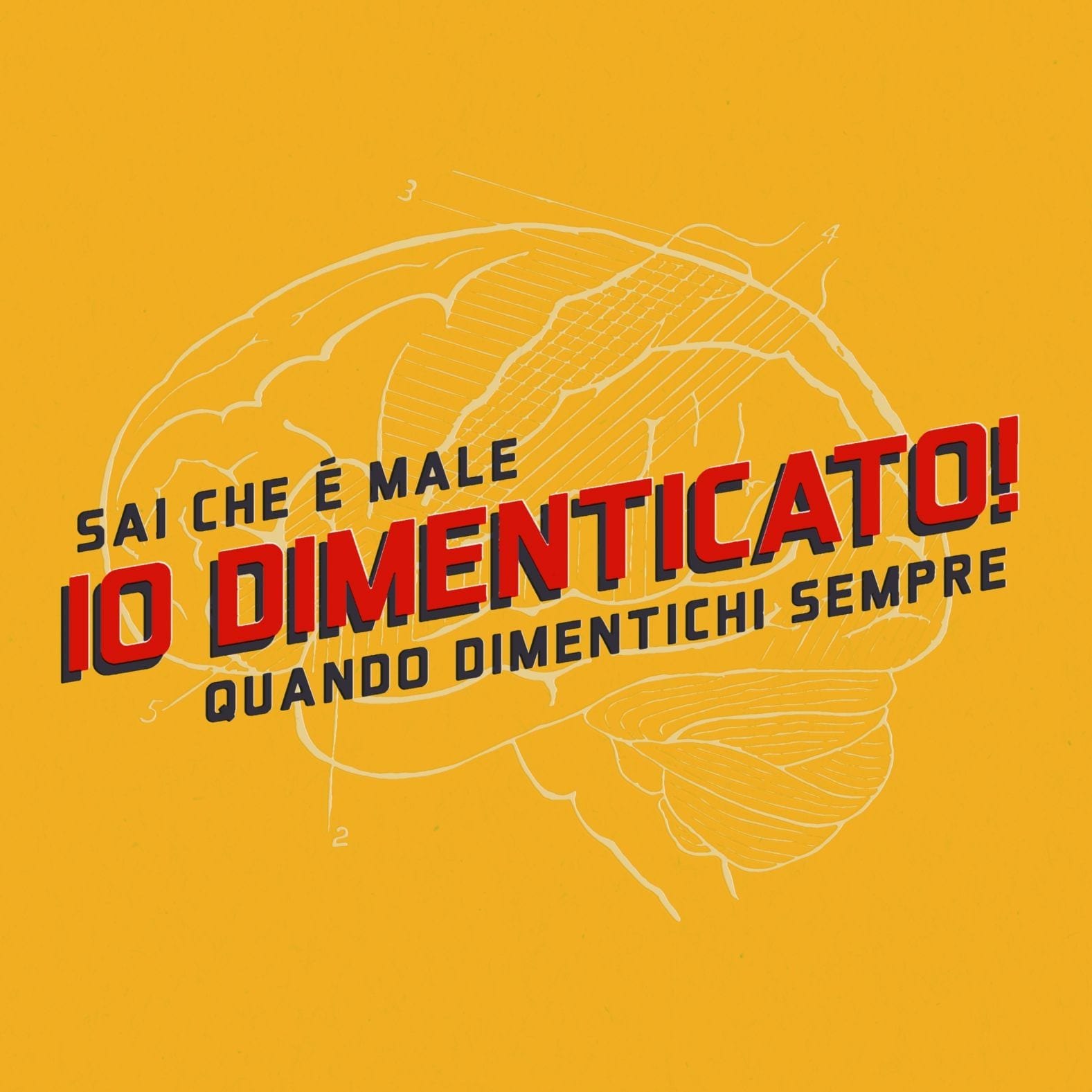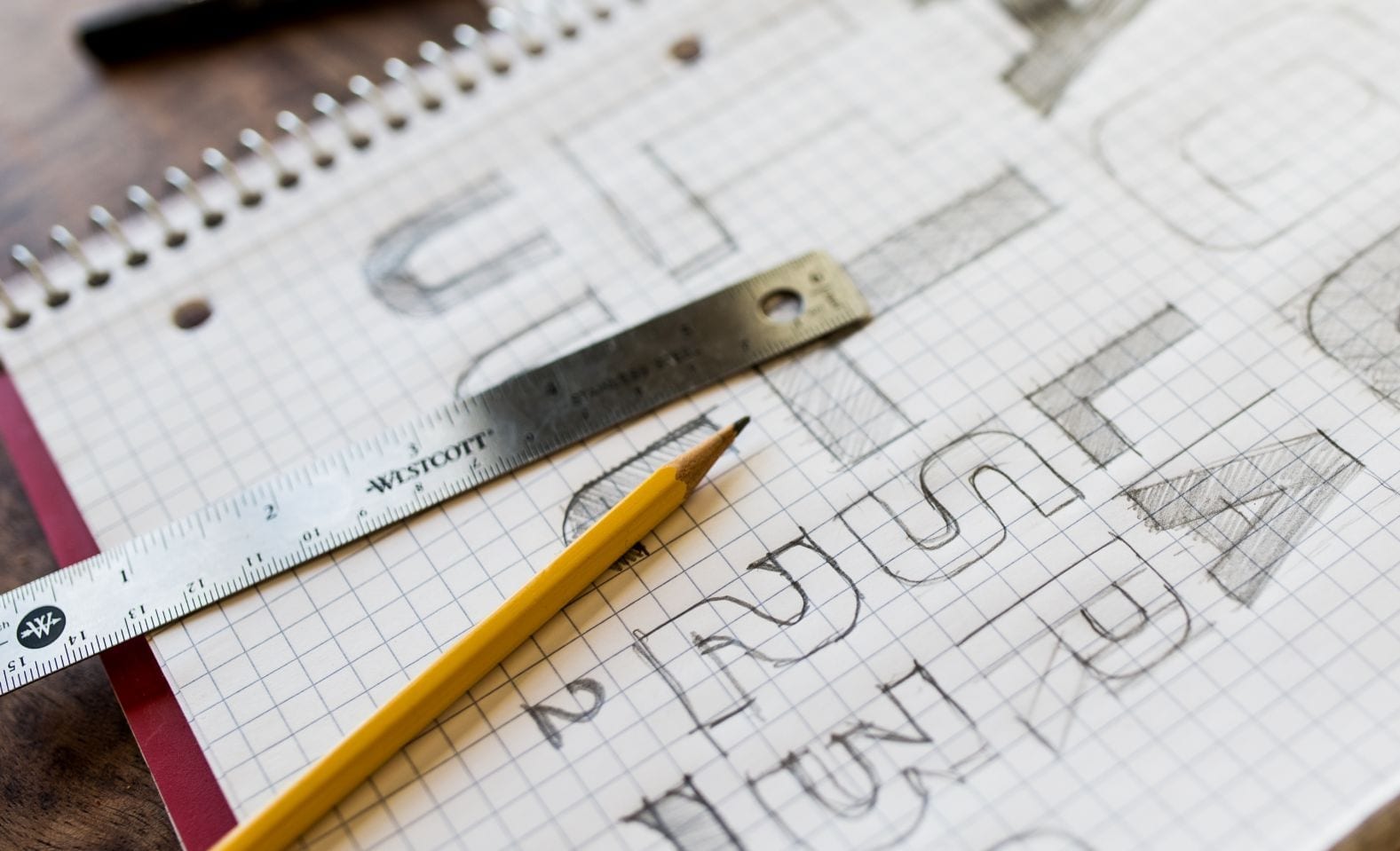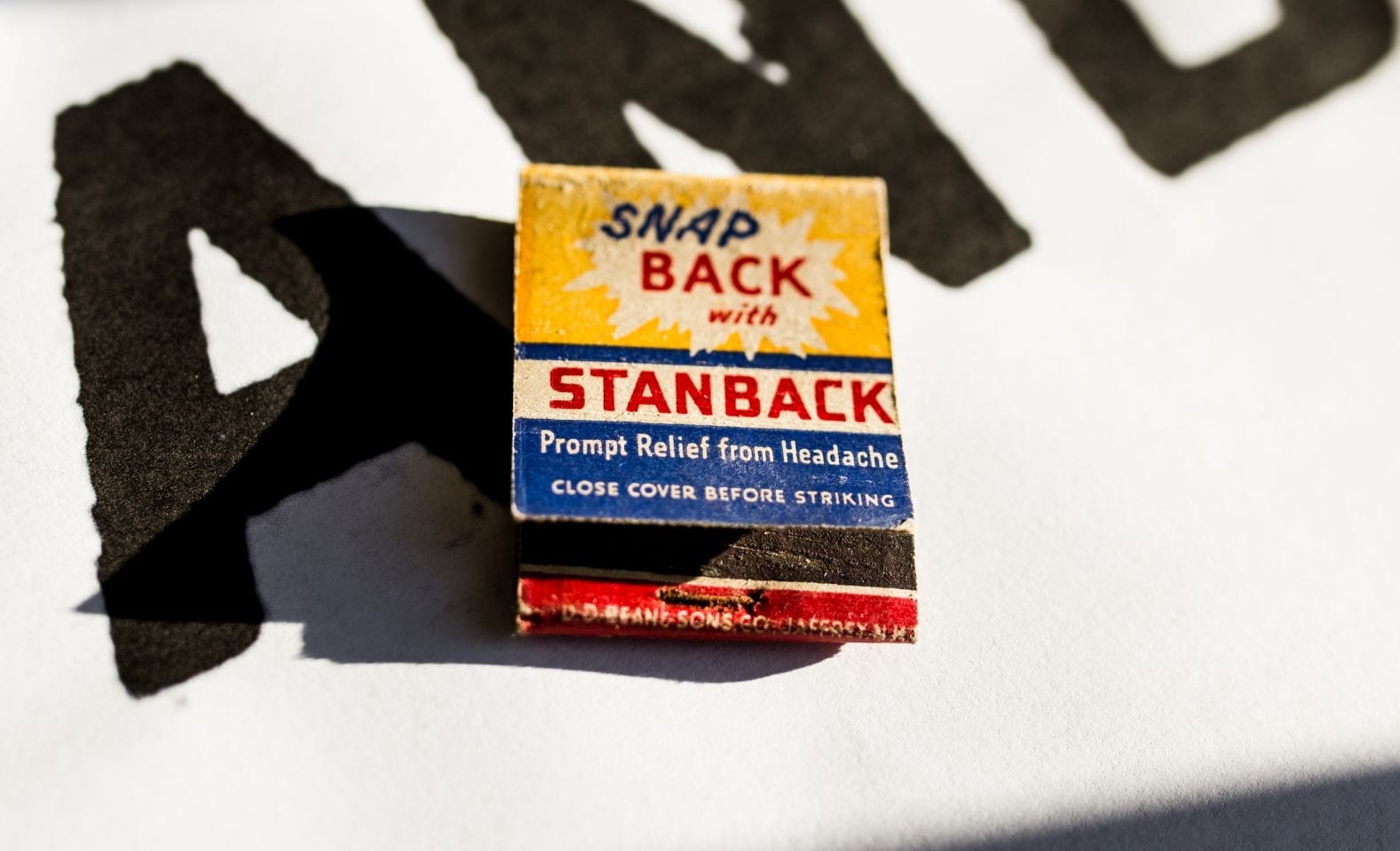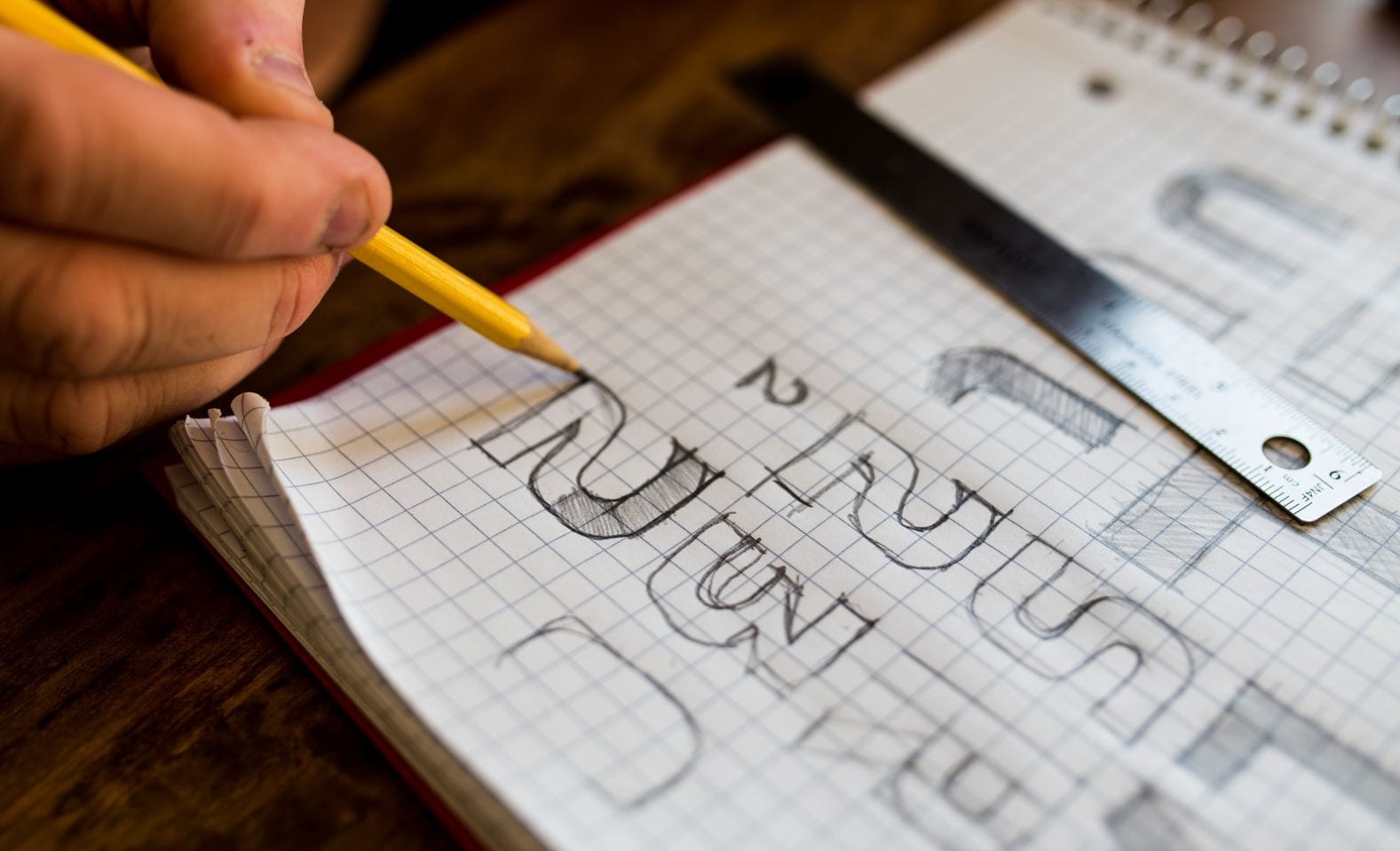The Inspiration
While inspiration came from the Matchbook Collection as a whole, we derived the typeface from lettering we found appealing. Type on the matchbooks comes from one of two places — physical metal type that was set and printed (which was usually a standard typeface like Futura, and not worth emulating) or hand-drawn type that was created as part of the matchbook illustration or artwork. Since we were also testing the waters of type creation, an entire discipline unto itself, we chose a solid slab display face over a more intricate serif or cursive type. While there are literally thousands of fonts in the world, the first step was to ensure we were making something individual. There are plenty of other tall/condensed thick slab typefaces, but our chosen sample had an appealing and unique combination of traditional shapes and tight-radius curved corners that we didn’t find in related available typefaces.
